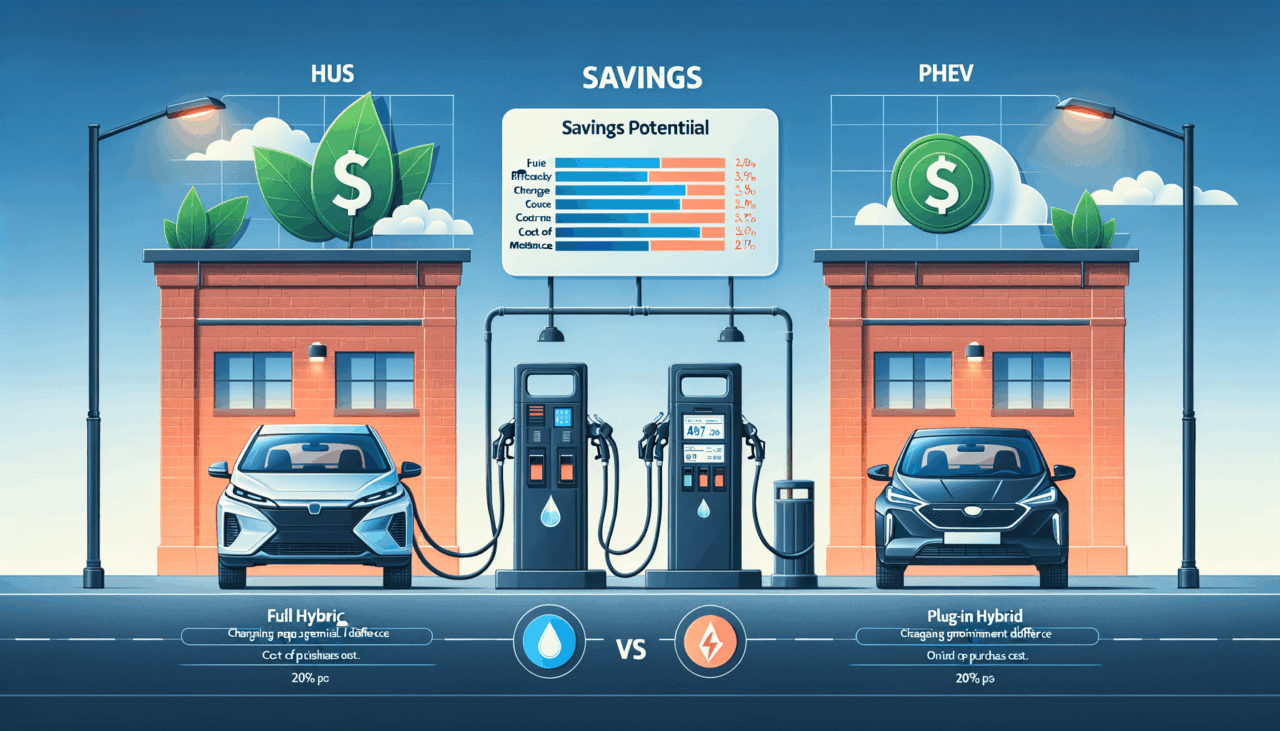Full Hybrid vs. Plug-In Hybrid (PHEV) – Which Offers More Savings?
As the sun sets over the ancient pyramids of Giza, casting long shadows over the desert sands, a quiet revolution in transportation is unfolding across the modern highways of Cairo and beyond. The age-old debate of Full Hybrid versus Plug-In Hybrid (PHEV) vehicles is much like a bustling bazaar, each option offering its own unique wares and promises of savings. As we journey through this comparative analysis, imagine yourself navigating the vibrant souks of Marrakech, where every choice is accompanied by the allure of discovery and potential treasures.
Characteristics of Full Hybrids
Full Hybrids are akin to a seasoned traveler who knows how to make the most of every situation. These vehicles seamlessly blend the use of an internal combustion engine with an electric motor, allowing them to operate in a variety of modes: gas-only, electric-only, or a combination of both. They are the wise choice for those who value simplicity and efficiency without the need to plug in.
-
Fuel Efficiency: Full Hybrids are designed for optimal fuel consumption, especially in stop-and-go city traffic. Their regenerative braking systems capture energy that would otherwise be lost, returning it to the battery.
-
Convenience: With no need for external charging, Full Hybrids offer convenience similar to traditional vehicles. Simply fill the gas tank and go, making them ideal for long-distance travelers and those without access to charging facilities.
-
Cost: Typically, Full Hybrids have a lower upfront cost compared to PHEVs, appealing to budget-conscious consumers who still want to enjoy the benefits of hybrid technology.
Characteristics of Plug-In Hybrids (PHEVs)
In contrast, Plug-In Hybrids are the adventurous wanderers, always ready for the next exploration with a little extra preparation. These vehicles expand the electric-only driving range by allowing the battery to be charged from an external power source, much like preparing provisions before a long journey through the Sahara.
-
Extended Electric Range: PHEVs offer the ability to drive longer distances on electric power alone, making them ideal for short daily commutes and reducing fuel consumption significantly.
-
Environmental Impact: By relying more on electric power, PHEVs can contribute to a reduction in overall emissions, aligning with the global push towards greener mobility solutions.
-
Potential Savings: While the initial cost might be higher, government incentives and lower fuel costs can provide significant savings over time, especially for those who have access to regular charging facilities.
Comparative Table: Full Hybrid vs. Plug-In Hybrid (PHEV)
| Feature | Full Hybrid | Plug-In Hybrid (PHEV) |
|---|---|---|
| Fuel Efficiency | Excellent in city driving, good overall | Superior for short trips on electric power |
| Convenience | No charging required, gas stations suffice | Requires access to charging stations |
| Electric Range | Limited, primarily for low-speed, short distances | Extended, suitable for daily commutes |
| Cost | Lower initial cost, fewer incentives available | Higher initial cost, but potential incentives |
| Environmental Impact | Moderate, reduced emissions compared to traditional | Lower emissions with frequent electric usage |
| Maintenance | Similar to traditional vehicles | Potentially higher due to complex systems |
In the grand tapestry of automotive choices, the decision between a Full Hybrid and a Plug-In Hybrid (PHEV) is a personal one, much like selecting a prized rug from the bazaars of Istanbul. Each option weaves its own narrative of savings, convenience, and environmental consciousness. As you stand at this crossroads, envision your journey, consider your needs, and let the stories of these hybrid marvels guide you towards the vehicle that promises not just savings, but a harmonious blend of technology and tradition.

Comments (0)
There are no comments here yet, you can be the first!